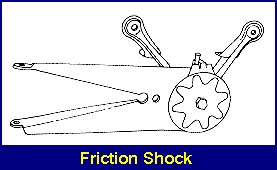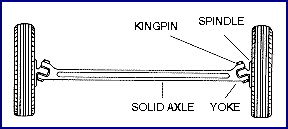HISTORY OF SHOCK ABSORBERS
Early vehicle manufacturers began finding solutions to the problems of steering and passenger comfort. The front wheels were attached to the axle using steering spindles and kingpins, which allowed the wheels to pivot while the axle remained stationary. And the up and down oscillations of the leaf springs were damped by a device called a “shock absorber.”
These first shock absorbers were simply two arms connected by a bolt, with a friction disc between them. Resistance was adjusted by tightening or loosening the bolt. As might be expected, these shocks were not very durable. And their performance left much to be desired.
Over the years, suspension systems evolved into sophisticated design. Concepts and components have changed – and continue to change – dramatically. But, the basic objectives remain the same:
- To provide steering stability with good handling characteristics, and
- To maximize passenger comfort.
- Achieving these objectives under all the variables of a vehicle in motion is what we call ride control.
Ride control is affected by the weight of the vehicle, the weight distribution, vehicle speed, road conditions and the condition of suspension system components, including tyres, and wheel alignment. It’s the job of the Ride Control Expert to make sure the suspension components are in good shape and the wheels are properly aligned. After doing that job, the effects of the other variables will be minimized. The car or light truck will steer and handle well, and the passengers will ride in comfort over the full range of driving conditions.
As we review suspension system components and how they work together, remember that a vehicle in motion is much more than wheels turning. As the tyre revolves, the suspension system is in a dynamic state of balance, continuously compensating and adjusting for changing driving conditions. The modern suspension system is automotive engineering at its best.




